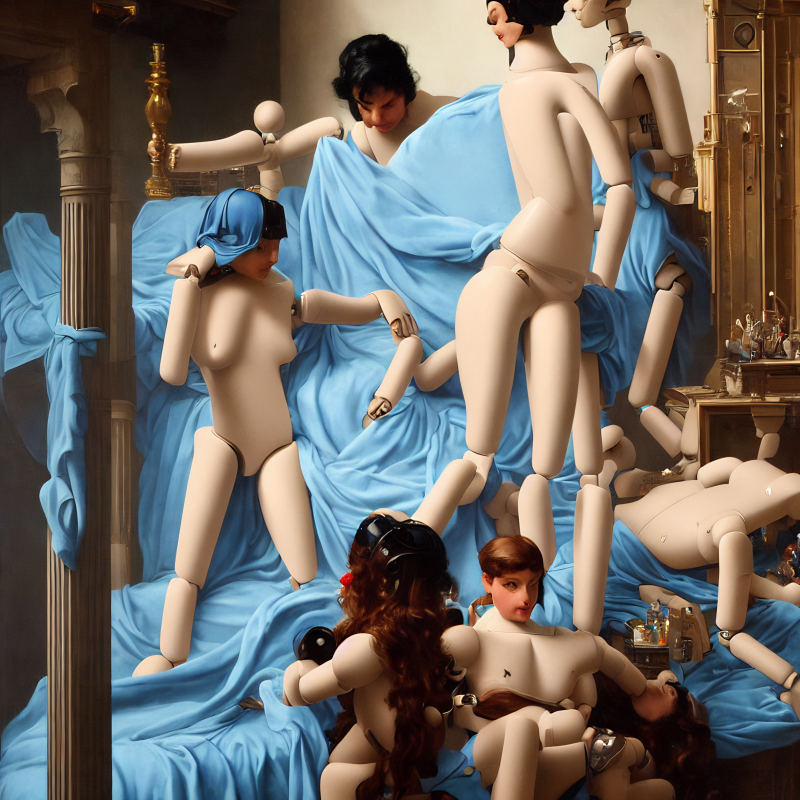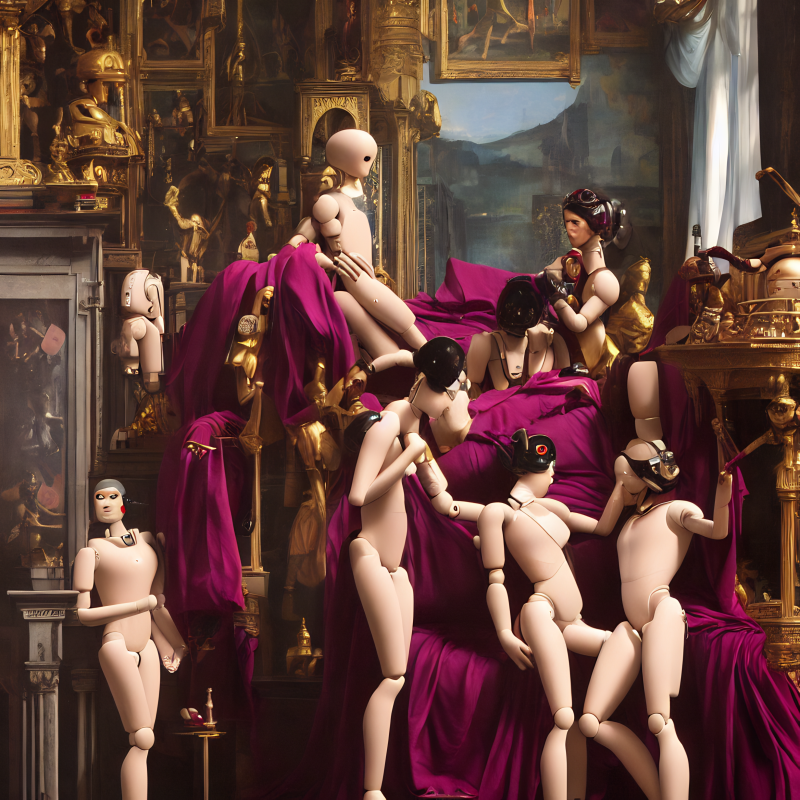‘Speciesism’ by Obvious Group
We're thrilled to present the latest project from Obvious, the French trio of artists and researchers who made history with the major auction sale of the first work of art using artificial intelligence by Christie's in 2018. These artists have marked a significant turning point in the art market and were named among Forbes' "30 Under 30" list in 2020. On July 18th, they launched their newest project, ‘Speciesism’ on Kate Vass Galerie’s digital extension, K011, as part of our ongoing show ‘Do Androids Dream of Electric Sheep?’. Let's now delve into the trio’s journey and explore this series with more depth.
Obvious, a pioneering art collective, was established in 2017 by a group of longtime friends and researchers who shared an interest in the creative possibilities of Artificial Intelligence (AI). Their ambition was to create art that was accessible and understandable to everyone, even to those unfamiliar with technology or not experts in the art field. In essence, they sought to create 'obvious' art, thereby establishing the origin of the collective's name.
Their exploration into the intersection of AI and art was catalyzed by a team member who is an AI researcher. They immediately perceived algorithms as a powerful tool to delve into, giving birth to new, unique, and innovative works. Their belief is that algorithms help us understand human nature and push us to surpass our current levels of creativity. They envision a new level of collaboration between the artist and the tool, a partnership where the human hand and the machine work in harmony to craft new aesthetics.
Obvious began their creative endeavor with the creation of a series of classical portraits using Generative Adversarial Networks (GANs). The result was a collection of eleven artworks known as the ‘Belamy Family’ series. These AI-created portraits, reminiscent of traditional European art, represent aristocrats from various historical periods. Using a dataset of 15,000 human-painted portraits, Obvious brought the fictitious Belamy family to life. This collection was well-received in the art community, and its auction by Christie's brought significant exposure.
This remarkable success enabled Obvious to participate in major exhibitions, including one at the prestigious Hermitage Museum. Each year, the collective releases a new series; after the Belamys, they introduced the ‘Electric Dreams of Ukiyo’ series, followed by a series of African masks in 2020. In 2022, they held their first solo show, '7.1', a series that paid tribute to the seven wonders of the ancient world, inspired by antique texts.
In July 2023, Obvious unveiled its latest work, ‘Speciesism’ on KVG's digital exhibition, K011. This thought-provoking collaboration continues to question the intimate relationship between humans and machines, blurring the lines between traditional art and AI-enabled creativity.
Speciesism
'Speciesism', the latest collection from Obvious, breaks the traditional norms to offer a modern interpretation of our interactions with different intelligent entities, including the rapidly evolving field of machine learning and artificial intelligence. This series invites viewers to question the categorization of intelligent life into distinct classifications, challenging our understanding of other beings, from the exploitation of animals to ensure our food chain, to the ongoing discourse around new forms of intelligence in the machine learning field.
Infused with influences from the aesthetics of Renaissance art while incorporating contemporary concerns, the series provides a powerful commentary on society's classification of intelligence and our intricate relationships with various life forms. One of the most compelling influences comes from the cinematic adaptation of Philip K. Dick’s novel ‘Do Androids Dream of Electric Sheep?’—the film 'Blade Runner'. In particular, the scene where protagonist Deckard notices android Rachel's emotions serves as a crucial inspiration. This scene marks a pivotal point in Deckard's character development as he begins to empathize with androids—a form of life he has been hunting up until this point.
Mirroring the approach taken in Obvious's earlier 'Belamy Family' series, 'Speciesism' also employs a deep learning process, drawing upon a wide array of historical art references as inputs for the AI system. For Speciesism, the group chose Renaissance frescoes to feed into the machine. The Renaissance period, celebrated for its focus on human emotion, individualism, and exploration of the natural world, provides a parallel to this scene from the film. Just as Renaissance artists were acclaimed for their detailed and humanistic portrayal of subjects, the movie scene represents a broadening of empathy and understanding that we are capable of extending towards those perceived as 'different'. The presence of nude figures in the artwork underscores both vulnerability and sexuality. The raw, authentic exploration of these themes invites us to consider the depths of our acceptance of AI - recognizing it as a form of life that might also possess vulnerabilities and sensuality.
The 'Speciesism' series urges us to confront our fears and excitement regarding AI technologies. While the emergence of a new form of consciousness may seem far off, the series inspires viewers to ponder whether this is an aspiration we hold and how we might interact with this potential new 'entity'.
‘Speciesism’ is presented with 69 live-generated pieces on https://0kai.k011.com from the 18th of July!
Q&A
We would like to feature some Q&A in Obvious most recent interview by K011 Team.
K011: How you first got into making art?
Obvious: Back in 2017, we stumbled upon a research paper on GANs.
We were astonished by their potential to question the limitations of art, and decided to ask this question ourselves by creating a series of classical portraits using these tools.
K011: When did you become aware of Artificial Intelligence as a medium for art?
O: We weren’t aware of AI as a medium of art, until we used it ourselves to such ends.
K011: What would be the main thing which sets you apart from other AI artists?
O: Our approach is conceptual, rather than purely visual. In addition to being a tool for exploring new aesthetics, we see AI as a fascinating society concern.
K011: How would you describe this new collection?
O: Inspired by Blade Runner's scene where Deckard notices Rachel's emotions, the collection reinterprets species interactions through a contemporary take on Renaissance frescoes.
K011: How do rarity traits work?
O: Selecting indoor and outdoor scenes typical in Renaissance frescoes, we added a twist with the CMYK color model for unique tints. Each color and setup blend introduces a different rarity.






